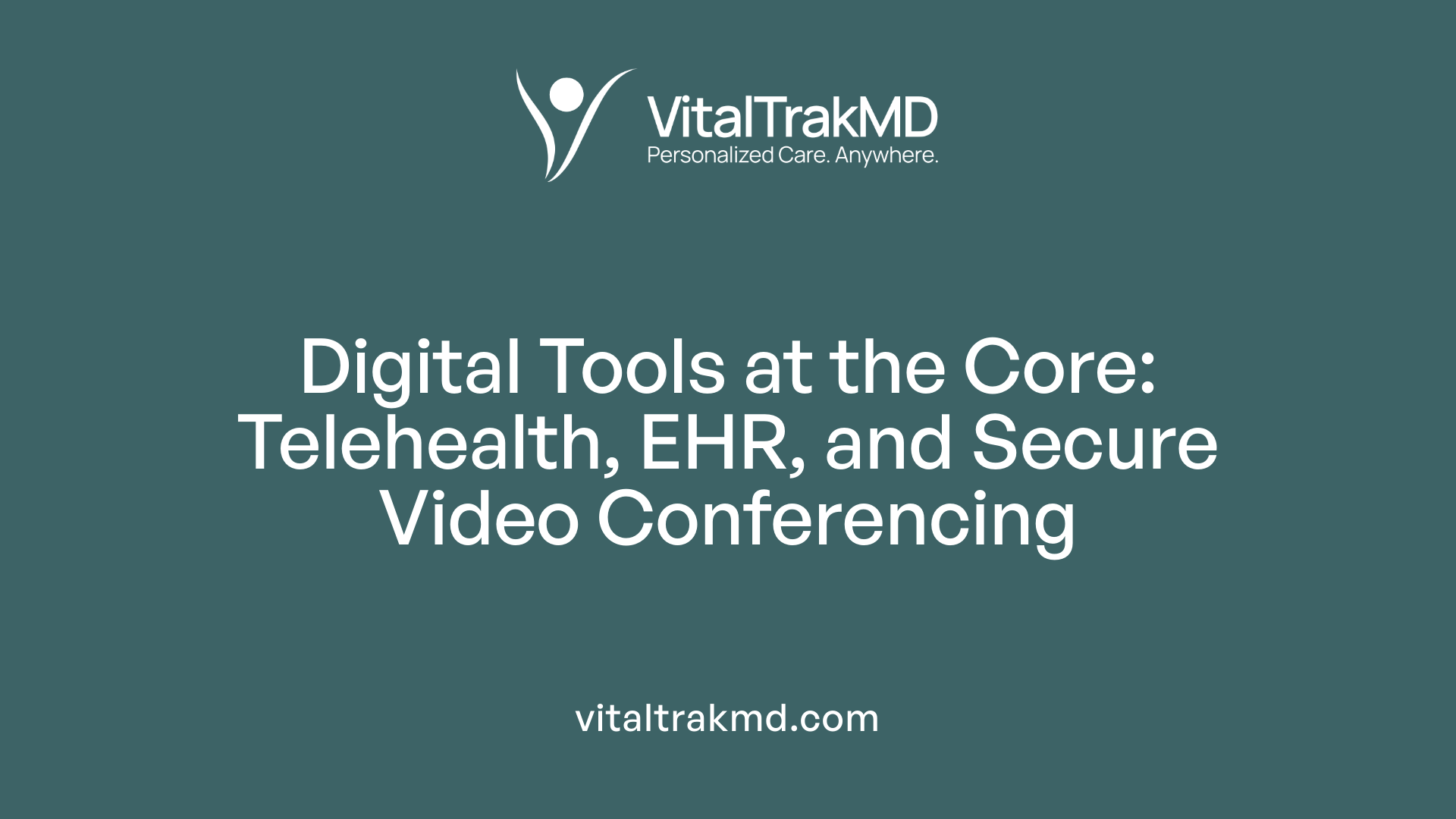Qualities of Top Hybrid Healthcare Services

Understanding Hybrid Healthcare: A Patient-Centered Approach
Hybrid healthcare represents a revolutionary shift in medical service provision, integrating traditional in-person care with innovative digital health solutions. This model leverages telehealth, remote monitoring, and digital tools to offer flexible, accessible, and personalized services. Its rapid adoption accelerated during the COVID-19 pandemic, cementing its role as a cornerstone of modern healthcare. By combining face-to-face visits with virtual consultations, hybrid systems seek to optimize resource utilization, enhance patient engagement, and improve clinical outcomes. As digital transformation continues, understanding the core qualities of effective hybrid healthcare services becomes essential for providers, policymakers, and patients alike.
Defining the Hybrid Healthcare Model

What is the hybrid healthcare model?
The hybrid healthcare model merges in-person medical care with virtual healthcare services, creating a flexible and patient-centered system. This approach allows healthcare providers to offer tailored care plans that incorporate both face-to-face visits and remote consultations. It significantly improves accessibility for patients by reducing the need for physical travel and enabling care in remote or underserved areas.
Digital tools are at the core of this system. Telehealth platforms facilitate real-time virtual consultations, supported by electronic health records (EHR) for seamless data sharing and billing platforms for efficient payment processing. Secure video conferencing technologies ensure privacy and HIPAA compliance, allowing safe and effective remote interactions.
Beyond patient care, the hybrid model emphasizes operational flexibility, including remote work arrangements for healthcare staff. Many providers have adopted more flexible schedules and telework options, which help in reducing staff burnout and improving work-life balance.
This integrated approach also leverages digital patient engagement tools such as appointment scheduling apps, automated reminders, and online payment systems. These innovations streamline administrative processes, improve patient experience, and foster continuous engagement.
Overall, the hybrid healthcare system aims to deliver more accessible, efficient, and personalized care. It enhances healthcare quality, boosts patient satisfaction, and supports provider well-being, which are crucial during ongoing healthcare challenges and future service expansions.
Use of technology in hybrid care
- Telehealth platforms for virtual visits.
- Electronic health records for integrated patient data.
- Secure billing and payment systems.
- Digital engagement tools for appointment management and patient communication.
Shift towards flexible, remote work arrangements for staff
- Adoption of telecommuting options.
- Flexible scheduling to mitigate burnout.
- Use of cloud-based systems for collaborative work.
- Ongoing staff training on digital tools and telehealth best practices.
This combination of innovative technology and adaptable workflows characterizes the modern hybrid healthcare model, emphasizing continuous improvement and patient-centered care.
Benefits and Impact of Hybrid Healthcare Models

How does hybrid healthcare improve access for remote and underserved populations?
Hybrid healthcare significantly enhances accessibility by bridging geographical and mobility barriers. Patients living in rural or remote areas, or those with transportation issues, can receive timely care through virtual visits and remote monitoring tools. This approach extends health services beyond traditional settings, ensuring that populations who might otherwise face obstacles accessing healthcare can benefit from ongoing, comprehensive care.
How does hybrid care facilitate early intervention and maintain care continuity?
The integration of digital tools allows healthcare providers to monitor patients' health status continuously, enabling early detection of potential issues. Virtual consultations and remote assessments make it easier to manage chronic conditions and follow up regularly, fostering consistent interactions regardless of physical location. This ongoing connection improves patient outcomes through proactive management and reduces the risk of complications.
What cost advantages do hybrid healthcare models offer?
Cost efficiency is a major benefit, impacting both healthcare systems and patients. For patients, hybrid care reduces expenses related to transportation, parking, and time off work. For providers, it minimizes overhead costs by decreasing the need for physical space and resources, enabling more effective staff utilization. Additionally, early intervention supported by remote monitoring reduces hospital admissions and emergency visits, lowering overall healthcare spending.
How does hybrid care boost patient satisfaction and engagement?
Patients appreciate the convenience, flexibility, and personalized nature of hybrid services. Being able to choose in-person or virtual visits based on their preferences and needs enhances engagement. Virtual platforms also facilitate better communication, prompt responses, and access to educational resources, fostering trust and satisfaction. This increased engagement contributes to better adherence to treatment plans and improved health outcomes.
In what ways does hybrid healthcare reduce wait times and address provider shortages?
By streamlining scheduling and optimizing resource use, hybrid models decrease wait times for appointments. Virtual consultations can be scheduled more flexibly, often with shorter notice, making care more responsive. Additionally, hybrid care supports staffing flexibility, allowing providers to work remotely or manage larger patient panels without burnout, thereby alleviating shortages and improving care delivery.
| Benefit Area | Explanation | Additional Details |
|---|---|---|
| Increased Accessibility | Reaches remote & underserved populations | Overcomes transportation and mobility barriers |
| Care Continuity | Ensures ongoing patient-provider connection | Uses digital tools for regular monitoring & communication |
| Cost Efficiency | Reduces expenses for system and patients | Cuts transportation, overhead, and emergency costs |
| Patient Satisfaction | Offers convenience & personalized care | Empowers patients with flexible options |
| Wait Time Reduction | Enables quicker access to care | Virtual scheduling & resource optimization |
The adoption of hybrid healthcare models is transforming the landscape by making healthcare more patient-centered, efficient, and inclusive. The innovations in digital technology and strategic partnerships contribute to creating a resilient, adaptable healthcare infrastructure capable of meeting diverse needs while controlling costs.
Critical Elements of Effective Hybrid Healthcare Services

What are the key qualities of effective hybrid healthcare services?
Effective hybrid healthcare services are distinguished by their adaptability and patient-centered design. They provide flexibility through various care pathways, including inpatient, home-based, and telemedicine options, allowing smooth transitions tailored to individual needs.
A fundamental aspect is the seamless integration of clinical workflows that combine in-person and remote consultations. This integration ensures continuity of care, promotes efficiency, and fosters a strong patient-provider relationship.
Robust technological infrastructure is vital. Healthcare facilities must have adaptable physical spaces equipped with reliable internet connectivity, secure and user-friendly platforms, and tools compatible with electronic health records. Privacy and data security are paramount, necessitating compliance with regulations like HIPAA.
Staff training forms a core component. Providers should receive ongoing education in digital literacy, communication skills tailored to virtual settings, and the use of telehealth technologies. This prepares them to deliver high-quality, empathetic care across different modes.
Implementing quality standards and continuous performance monitoring is essential. Establishing clear benchmarks, tracking patient outcomes, and regularly assessing patient satisfaction help maintain high care quality and identify improvement opportunities.
Lastly, designing care pathways that are truly patient-centric, with personalized treatment plans, enhances engagement and outcomes. Supportive resources and accessible information empower patients, making hybrid care a practical and effective model.
The Role of Healthcare Professionals in Hybrid Care
How do healthcare professionals adapt to hybrid care environments?
Healthcare providers play a crucial part in making hybrid healthcare effective and patient-centered. They must develop the ability to communicate clearly and compassionately through virtual platforms, adjusting their clinical skills for remote assessments. This includes mastering telehealth technologies, remote monitoring devices, and digital tools that support ongoing patient engagement.
Collaboration across interdisciplinary teams
Hybrid healthcare relies on seamless teamwork involving primary care, specialists, mental health, physical therapy, and digital support staff. Professionals coordinate care through shared electronic health records and consistent communication, ensuring patients receive cohesive services regardless of physical location. This collaborative approach enhances care quality and improves patient outcomes.
Building digital literacy and proficiency
A vital responsibility of healthcare workers in hybrid systems is to boost their digital literacy. They must become adept at using telemedicine software, remote diagnostic tools, virtual triage systems, and patient monitoring apps. Competencies in troubleshooting technology issues and safeguarding data privacy are essential to maintaining trust and safety.
Supporting patient engagement and education
Healthcare professionals are tasked with empowering patients to navigate digital health tools confidently. This involves providing instruction on using mobile apps, explaining the benefits of remote monitoring, and encouraging ongoing communication through virtual check-ins. Engaged patients are more likely to follow treatment plans and experience better health outcomes.
Ensuring continuous quality improvement
Regular assessment of hybrid care services is necessary for maintaining high standards. Clinicians monitor patient satisfaction, clinical outcomes, and technological performance to identify areas for enhancement. Incorporating feedback and leveraging data analytics helps refine workflows, protocols, and educational strategies.
| Role | Responsibilities | Skills Needed | Impact on Care |
|---|---|---|---|
| Communication Clinician | Adapts verbal and non-verbal cues for virtual interactions | Empathy, digital communication | Improves patient understanding and comfort |
| Interdisciplinary Team Member | Coordinates care with other providers using digital tools | Collaboration, tech literacy | Ensures seamless, comprehensive care |
| Digital Practitioner | Manages technology and troubleshooting | Digital literacy, problem-solving | Maintains workflow efficiency |
| Patient Support Specialist | Aids patients in using telehealth tools | Teaching skills, patience | Boosts patient engagement |
| Quality Advocate | Monitors and improves care standards | Data analysis, evaluative skills | elevates care quality and safety |
The effectiveness of hybrid healthcare depends on healthcare professionals continuously updating their skills and actively participating in system improvements. By embracing digital transformation and maintaining a patient-first approach, they help create a flexible, accessible, and high-quality care environment.
Technological Innovations Supporting Hybrid Healthcare
What technological considerations and innovations support hybrid healthcare?
Implementing effective hybrid healthcare models depends heavily on advanced technological infrastructure. One of the primary considerations involves creating secure, interoperable telehealth platforms that can seamlessly connect various digital health tools. These platforms need to comply with privacy regulations such as HIPAA, ensuring the safety of patient data while allowing easy access for both providers and patients.
Emerging technologies play a crucial role in enhancing the capabilities of hybrid healthcare. The Internet of Things (IoT), for example, brings in remote monitoring devices and wearable sensors that continuously collect vital health data. These devices enable early detection of health issues and support ongoing disease management.
Artificial Intelligence (AI) contributes significantly toward diagnostics, predictive analytics, and personalized treatment plans. AI algorithms analyze vast amounts of real-time data, providing clinicians with actionable insights that improve decision-making and patient outcomes.
Blockchain technology offers solutions for secure data sharing across different healthcare systems. Its decentralized ledger ensures data integrity, enhances transparency, and reduces risks of breaches, which is vital in a digital, interconnected care environment.
Remote monitoring devices and wearables are integral to modern hybrid models. These tools facilitate continuous tracking of health conditions such as heart rate, glucose levels, and activity patterns. Patients can send live data to their care teams, enabling responsive and tailored interventions.
Platforms that enable real-time data sharing are essential for transition points between in-person and virtual visits. They help healthcare providers access current patient information instantly, supporting timely clinical decisions.
Addressing the technological challenges in hybrid care involves overcoming high setup costs, integrating heterogeneous systems, and ensuring robust data security protocols. As these systems evolve, their scalability and user-friendliness improve, widening access for diverse patient populations.
In summary, the synergy between smart sensors, IoT-enabled devices, AI-driven analytics, and blockchain underpins the digital backbone of hybrid healthcare. These innovations lead to more personalized, proactive, and continuous care delivery, pushing the boundaries of traditional healthcare models. Purpose-built, scalable virtual platforms combined with reliable infrastructure are fundamental to fully realizing the potential of hybrid health systems.
Designing and Implementing Successful Hybrid Care Models
What are best practices for designing and implementing successful hybrid care models?
Creating an effective hybrid healthcare model requires careful planning, steeped in understanding patient needs and integrating technology seamlessly into clinical workflows.
A foundational step involves conducting detailed patient needs assessments. This process helps identify which services can be delivered remotely, which require in-person visits, and how to personalize care plans. Understanding patient preferences, technological literacy, and access issues ensures the model is tailored effectively.
Once patient needs are mapped out, developing comprehensive digital infrastructure is essential. This includes selecting user-friendly telehealth platforms, remote monitoring tools, secure communication channels, and automated systems for appointment scheduling, reminders, and follow-up care. Such infrastructure ensures smooth, reliable interactions whether in-person or virtual.
Integrating these digital workflows into daily clinical operations aligns with established quality standards. This involves designing protocols for switching between in-person and remote visits, streamlining patient intake, documenting interactions accurately, and maintaining ongoing communication with patients.
Monitoring key performance indicators — such as patient satisfaction, health outcomes, appointment adherence, and operational efficiency — supports continuous improvement. Regular audits, patient feedback surveys, and outcome measurements help identify areas for refinement.
Staff training and change management play pivotal roles as well. Healthcare providers need education on new technologies, privacy regulations, communication techniques in virtual settings, and workflow adjustments. Ongoing support, peer learning, and feedback loops foster confidence and mastery.
Finally, flexibility and scalability are crucial for sustainable success. Systems should allow easy upgrades, incorporation of new tools, and adaptation to evolving patient populations and healthcare landscapes. Expanding access, especially to underserved groups, ensures broader health equity.
By embracing these practices—thorough needs assessment, robust digital infrastructure, aligned workflows, continuous monitoring, staff training, and adaptable system design—healthcare organizations can develop hybrid models that improve patient outcomes, enhance provider efficiency, and adapt to future challenges.
Looking Ahead: The Evolution and Future of Hybrid Healthcare
The future of hybrid healthcare is poised to be transformative, driven by technological advancements, innovative care models, and an unwavering focus on patient-centeredness. As AI, IoT, and blockchain continue to evolve, hybrid healthcare systems will become even more predictive, personalized, and accessible, bridging gaps across geographies and populations. Emphasizing quality, security, and scalability, healthcare providers must adopt best practices in design, training, and technology integration to maximize benefits. The ongoing evolution promises an era where healthcare is more efficient, equitable, and adapted to individual needs, ultimately leading to better health outcomes and a more resilient healthcare system.
References
- What Is Hybrid Healthcare? Tools, Benefits, and Solutions for Success
- Top Reasons to Implement a Hybrid Care Model in Modern Hospitals
- Developing a strategy for hybrid care | Telehealth.HHS.gov
- Designing for flexibility in hybrid care services: lessons learned from ...
- How the Hybrid Care Model is Transforming Patient Access
- Healthcare's Future Is a Hybrid Model - Caregility
- Hybrid Healthcare - Provista
- Hybrid Healthcare System Patient-Centered Care Model
Recent articles
Want to Feel Better and Live Healthier?
Join hundreds of patients taking control of their health with personalized care that fits their life – not the other way around.
Rated 4.8/5 by 32+ customers







